|
Questions
| 1. |
Why are there so many holes and small dunes on the sandy flat?
Answer 1
|
| |
| 2. |
Do all crabs walk laterally?
Answer 2
|
| |
| 3. |
Why the pincers of the following crabs are in uneven size?
Answer 3
|
| |
| 4. |
Why do people call mangrove as “red trees” in Chinese but apparently they are not red?
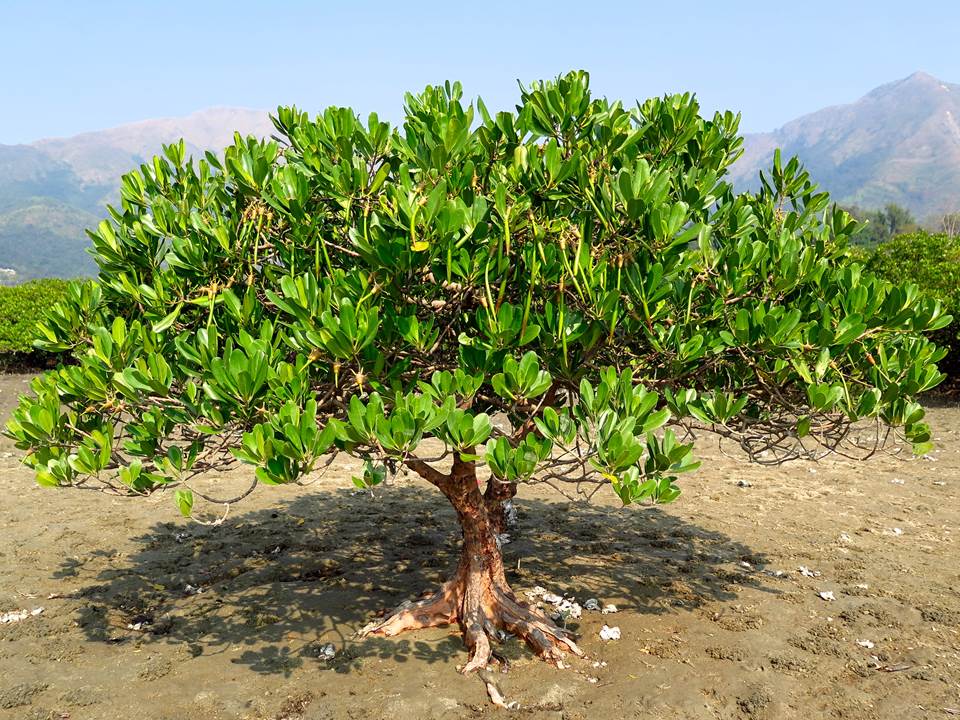
Answer 4
|
| |
| 5. |
Can trees carry embryo like human?
Answer 5
|
| |
| 6. |
Can trees sweat like human?
Answer 6
|
| |
|
| 7. |
As a kind of fish, why mudskipper can live in both water and land freely?
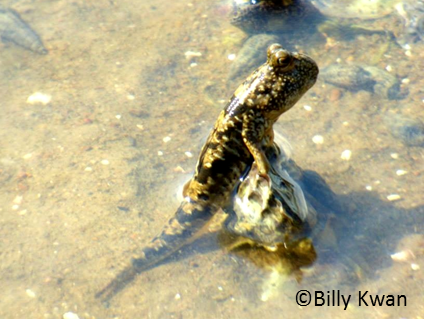
Answer 7
|
| |
|
| 8. |
Can we walk along the mangrove?

Answer 8
|

Answers
Answer 1
These holes are mainly dug by different types of crab and the dunes are originated from the holes. These holes not only serve as homes for crabs, they can also facilitate air circulation of the lower soil and thus enhance decomposition of organic matters.
Answer 2
No. Most crabs can walk only laterally, however, soldier crabs can walk forward instead of sideway.
Answer 3
Because they are male fiddler crabs. They get a bigger pincer for self-defence, mating and fighting, while the smaller one is used for feeding on organic matters in the sand. For the female ones, both pincers are small in even size.
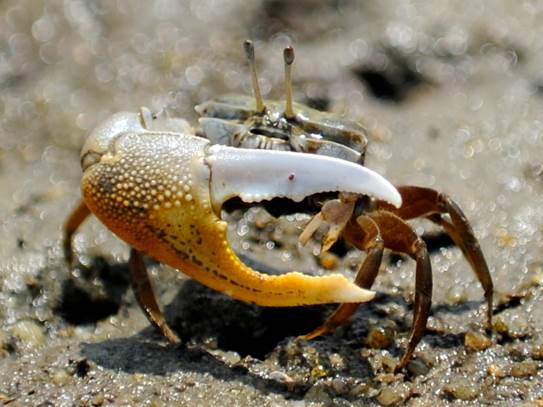
Gelasimus borealis (Male) |

Gelasimus borealis (Female) |
Answer 4
The Chinese name of mangrove came from the mangrove plants, especially family Rhizophoraceae. This family contains large amounts of reddish brown substance called tannin, therefore, in Chinese they are called “red trees”.
Answer 5
Some mangrove species (e.g., Kandelia obovata, Aegiceras corniculatum and Bruguiera gymnorrhiza) carry embryos called droppers inside their attached fruits and this phenomenon like “babies” being carried in their mothers. Droppers are germinated seeds that attach to the parent plant of mangroves after germination. This kind of viviparous reproduction allows rapid growth and establishment of mangrove seedlings once they come into contact with the substratum. It increases the survival rate of the mangroves in the unstable substratum and the intertidal environment.
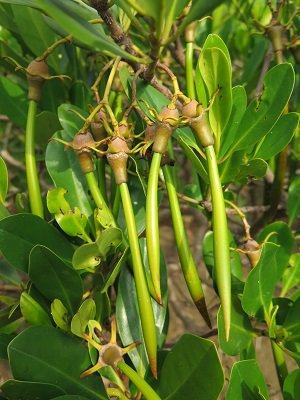
Kandelia obovata
|
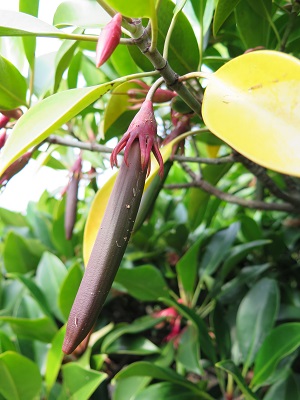
Bruguiera gymnorrhiza
|
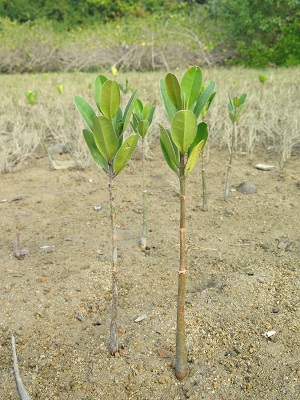
Kandelia obovata
|
Answer 6
Without the sweat gland, trees certainly cannot sweat like human. Nevertheless, salt glands are present in the leaves of some mangrove species (e.g., Aegiceras corniculatum and Lumnitzera racemosa). These salt glands are used to concentrate and actively excrete the absorbed salts so as to regulate the salt concentration inside the mangroves. As the salt is excreted in liquid form, it seems like the sweat on human, but salt crystal will be formed once the water is evaporated.

Salts were excreted as crystal on Aegiceras corniculatum’s leaf surface in bright daytime |
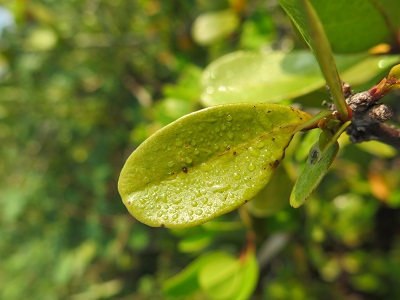
Salts were excreted as solution on Aegiceras corniculatum’s leaf surface in the evening |
Answer 7
This distinctive fish inhabits intertidal mudflat because it can breathe through their moist skin and store water in their gills. These special characteristics enable mudskipper to be out of water or in intertidal area for quite some time.
Answer 8

Ting Kok coastal area is a typical mangrove habitat. During high tides, sediments along coastal areas are covered by water; while during low tides, sediments along coastal areas are exposed in the air. In general, you can walk along the mangrove during low tides. You may click HERE for details of Predicted Tides at Tai Po Kau from the Hong Kong Observatory.
Please be reminded that tidal levels may be affected by many factors, including rainfall and wind. Be alert to the change in the environmental condition and personal safety during your visit. Please be reminded to comply with the “Visitor Codes”.
|